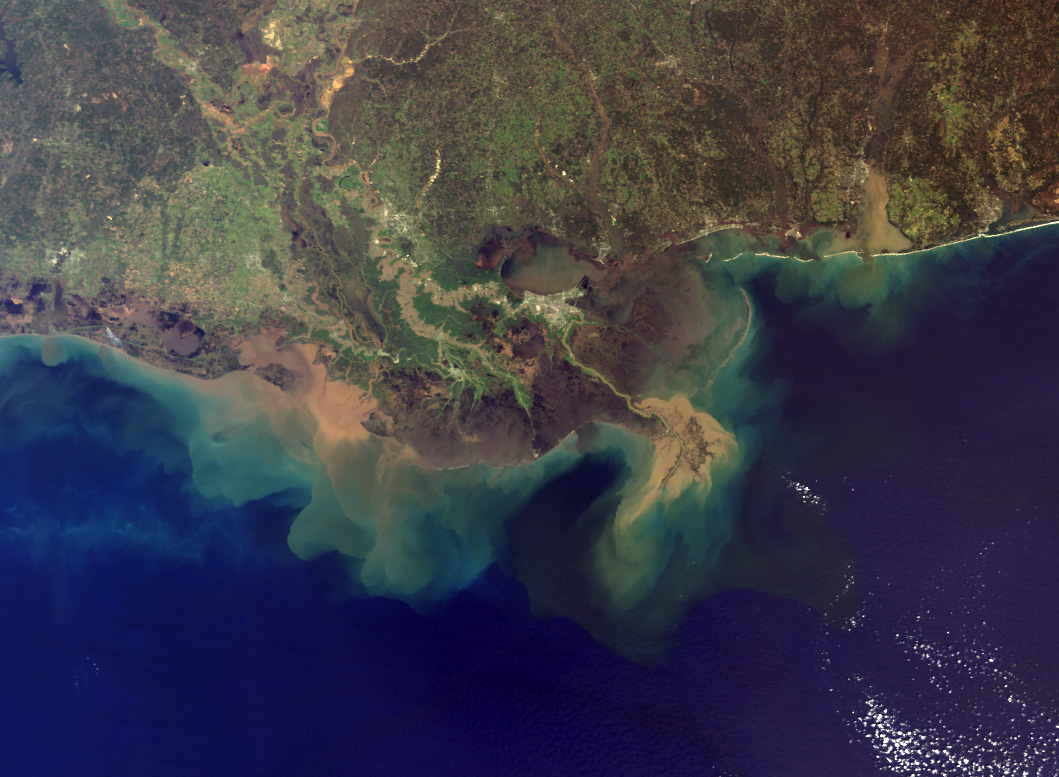Habitat Focus
The Gulf of Mexico is a diverse and unique place. ACER’s work is focusing on the Gulf’s coastal ecosystems. But what are these ecosystems? What are the plants and animals found there? Why are these habitats critical? In our Habitat Focus series, we explore the various habitats that are the focus of ACER research.
Habitat Focus: Coastal Ocean

The sediment plumes visible in the Gulf of Mexico when flying over the northern Gulf of Mexico coastline readily illustrate the influence of our rivers on the ocean. And yet, even when this influence is not visibly apparent, ecological and environmental processes on the coast and upriver in Gulf of Mexico watersheds affect nearshore ocean ecosystems creating a unique habitat known as the coastal ocean.
Habitat Focus: Estuaries, back bays and lagoons
Are shorelines ever just straight lines? If you look at a Google Earth image of the Gulf coast, you notice many indentations reaching into the mainland and islands occurring just offshore. The indentations are our estuaries, the islands are barrier islands and together they create important habitats known as back bays or lagoons.
Habitat Focus: Mangroves and Mangals
In our last installment of Habitat Focus we explored our Coastal Wetlands and briefly touched on mangrove stands as part of this vast habitat. This time we will explore the mangrove habitat in more detail.
The Northern Gulf of Mexico

With all of the discussion about the oil spill and restoration of Gulf habitats, we frequently see reference to the northern Gulf of Mexico. Where is the northern Gulf of Mexico and what are its unique features?
Habitat Focus: Coastal Wetlands
A coastal wetland is an area of land that is periodically flooded and drained. In the U.S., coastal wetlands are found along the Atlantic, Gulf, Pacific and Alaskan coasts.
Habitat Focus: Seagrasses
Keep off the seagrass! Have you ever seen this sign boating? And then wondered what exactly is a seagrass and why you should protect it?
Habitat Focus: Oyster Reefs
But I don’t eat oysters, so why should I care about oyster reefs?
The Chandeleur Islands – ACER’s primary study site

Many of ACER’s field experiments are being conducted around the Chandeleur Islands. These uninhabited barrier islands lie about 60 miles east of New Orleans and 30 miles south of Biloxi, MS helping to protect eastern Louisiana from waves and storms. Landward (west) of the island chain lies Chandeleur Sound and seaward (east) lies the Gulf of Mexico.









